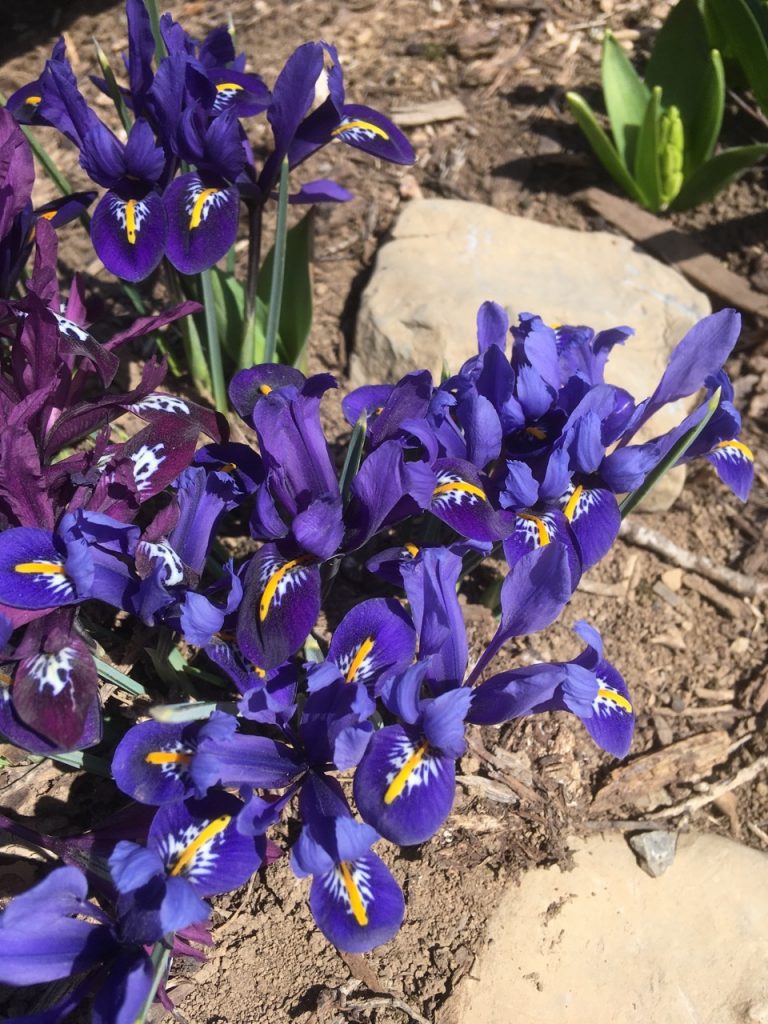Though I am a professed ecofeminist, I’ll admit I missed most of the reminders that Earth Day was coming up . . . There are so many other good things and hard things in our world right now, and they are all valiantly attempting to regain our attention by piercing through the covid-haze.
Yet what I haven’t missed are the clear reminders of how much human beings need one another in these days of social distancing. Articles, posts, and the plethora of friend-and-family Zoom calls are encouraging connections, antidotes to the strain on our mental and spiritual health. Now, on Earth Day, I wonder: can humans extend this awareness to how much we need the Earth?
Over the last month or two, I’ve been savoring Braiding Sweetgrass: Indigenous Wisdom, Scientific Knowledge, and the Teachings of Plantsby Robin Wall Kimmerer. The book reads like a devotional, each chapter offering enough profound thought for a few days. And Kimmerer invites the reader, sometimes bluntly and sometimes gently, to root deeply in the land, to see our relationship with the land as one of reciprocity, and to see the land’s necessary role in our communal healing and well-being.
My partner, dog, and I moved partway across the country six months ago for me to begin ministering at Madison Mennonite. I was just getting into my groove and starting to send down roots when COVID-19 hit. As I read Braiding Sweetgrass, I have felt keenly just how shallow my roots here are, which makes sense – we’ve just been transplanted into Wisconsin soil. And while I feel solid connections with the humans of my church and neighborhood, I’m still searching on this Earth Day for a connection with the land.
Kimmerer notes that white Americans have a sort of “pathology of homelessness.” We lack a sense of being rooted here (in the U.S.) and to the land, as if we have some subconscious nostalgia for the “old world.” Like our forebears, we live as though we have “one foot on the shore, one foot on the boat” – neither here nor there, forever restless, discontented, and with insatiable needs that come with our roots being shallow. She writes, “For the sake of the people and the land, the urgent work of the Second Man may be to set aside the ways of the colonist and become indigenous to place. But can Americans, as a nation of immigrants, learn to live here as if we were staying?”*
Diana Butler Bass, in Grounded: Finding God in the World, notes that she believes that some of our restlessness and rootless-ness comes from our deficiency of knowing the stories of our ancestors. Our realities are bound only to that which we know and have experienced ourselves; white folks live with little thought of our history—the way it has formed (and malformed) us—and even less thought of a future beyond us. We’ve become, as Bass writes, “nomads in time,” untethered from a bigger purpose or identity.**

These deficiencies and pathologies impact both our spiritual rootedness and our relationship with the land and other living things. This isn’t breaking news; we’ve long known of humanity’s betrayal—its violations—of the land’s trust and love. The stories fill our sacred texts and our history books.
Still, the earth gives and gives and gives, like a mother. Humans have chosen one day, Earth Day, to remember, to say thanks, to offer some ceremonial nod as a show of reciprocity. It’s hard to believe this is sufficient for truly and deeply honoring the source of all life – the Earth, which is also the Body of Christ.***
Kimmerer would suggest that the invitation of the land (and I would add, the invitation of the Body of Christ) is to “become indigenous” to the land, fully engaging and rooting our souls into the earth. And not because we want to consume it or profit from it, but because we want to honor it in the same way it honors us. The land needs us to root, to make a home on it –that is core to the meaning of reciprocity.
“To become indigenous is to grow the circle of healing to include all of Creation,” Kimmerer says.**** What does it mean for you, for us, to become indigenous to the places we call home? How can we sink our roots deep into the humus, recognizing that we do so not just to be fed, but so that we can participate in a reciprocal relationship with the land and other life?
May this Earth Day be the first of many holy days in which I and we put both feet firmly on the soil of our gardens, rooting with love and mutuality on the earth we call home.
*Kimmerer, 207
**Bass, 141.
***This idea has been developed elsewhere by women theologians of the Global South, and perhaps will make its way into a future post.
****Kimmerer, 212.

Since reading that book, I have begun capitalizing the names of birds, animals, and plants. It is a small step but I believe honors the Native American tradition and shows respect for other forms of life. Thanks for your sharing.
It’s an interesting juxtaposition to reflect on being unrooted (which I do often feel) after spending 5 weeks just in my house. Thanks for these reflections